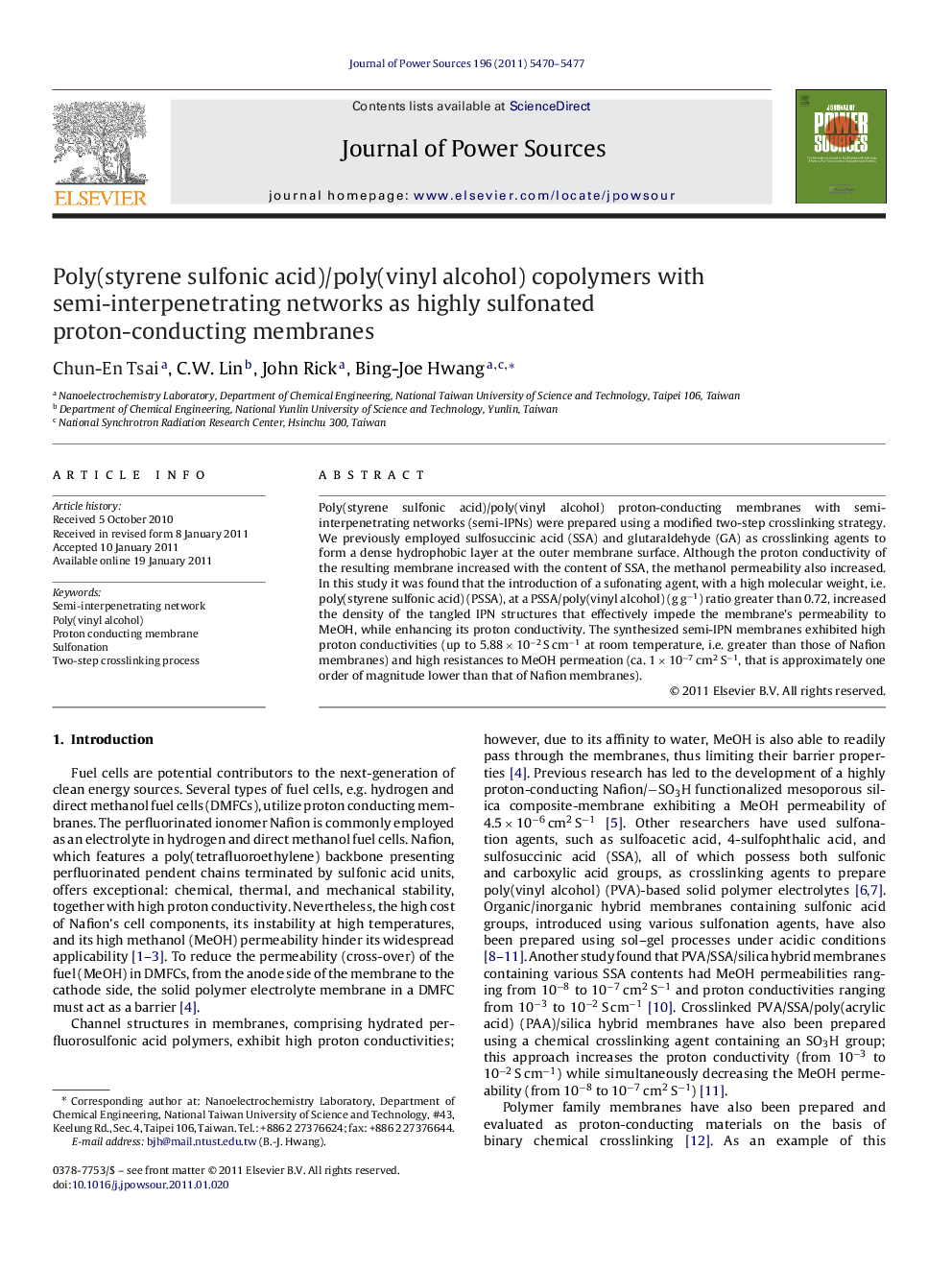| Article ID | Journal | Published Year | Pages | File Type |
|---|---|---|---|---|
| 1293456 | Journal of Power Sources | 2011 | 8 Pages |
Poly(styrene sulfonic acid)/poly(vinyl alcohol) proton-conducting membranes with semi-interpenetrating networks (semi-IPNs) were prepared using a modified two-step crosslinking strategy. We previously employed sulfosuccinic acid (SSA) and glutaraldehyde (GA) as crosslinking agents to form a dense hydrophobic layer at the outer membrane surface. Although the proton conductivity of the resulting membrane increased with the content of SSA, the methanol permeability also increased. In this study it was found that the introduction of a sufonating agent, with a high molecular weight, i.e. poly(styrene sulfonic acid) (PSSA), at a PSSA/poly(vinyl alcohol) (g g−1) ratio greater than 0.72, increased the density of the tangled IPN structures that effectively impede the membrane's permeability to MeOH, while enhancing its proton conductivity. The synthesized semi-IPN membranes exhibited high proton conductivities (up to 5.88 × 10−2 S cm−1 at room temperature, i.e. greater than those of Nafion membranes) and high resistances to MeOH permeation (ca. 1 × 10−7 cm2 S−1, that is approximately one order of magnitude lower than that of Nafion membranes).
Research highlights► Prepared polymer blends containing highly interpenetrating networks. ► Membranes show reasonably high conductivity. ► Methanol permeability is significantly reduced.
